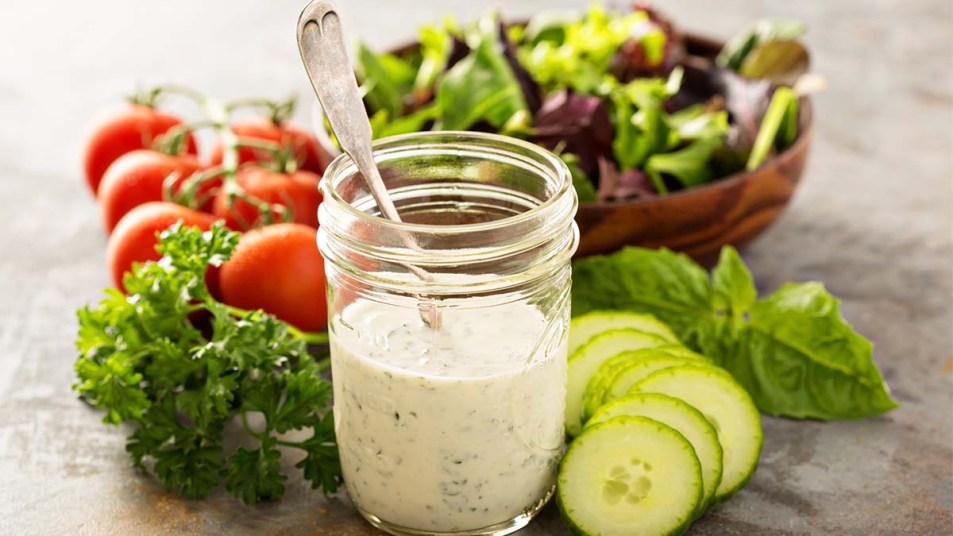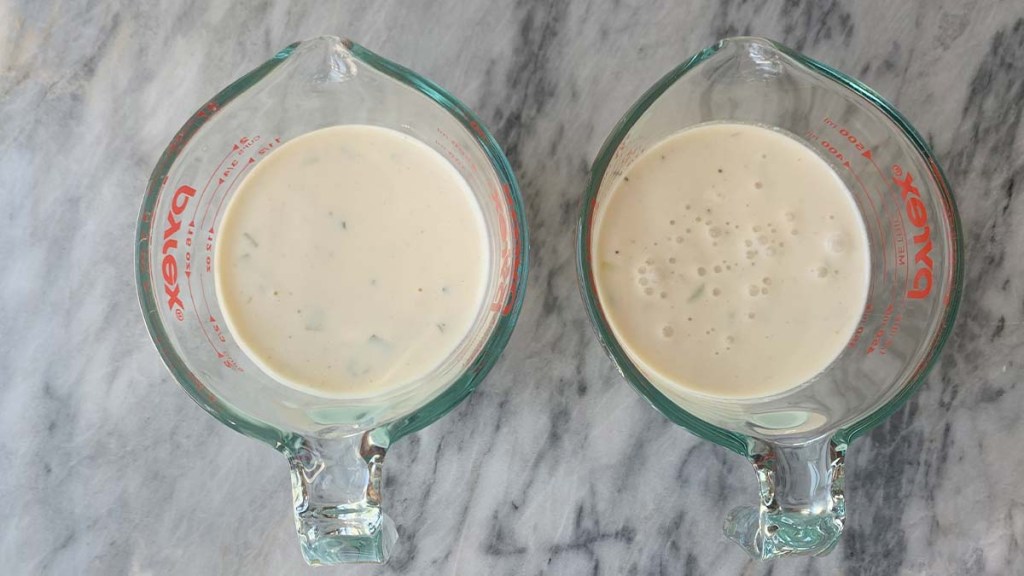Dairy vs. Vegan Buttermilk — Which One Makes the Better Homemade Salad Dressing?

Buttermilk is an ingredient that’s quite near and dear to my heart. Growing up, a quart of buttermilk was always in my parents’ fridge to make classics such as homemade biscuits, pancakes, or salad dressing.
It’s hard to imagine a version of buttermilk other than the thick, creamy dairy variety that I’m accustomed to. But little did I know, vegan buttermilk exists! So, I decided to do a salad dressing taste test to see how well it compares to the dairy kind.
A Tale of Two Kinds of Buttermilk
Before we dive into the taste test, it’s important to know what separates dairy from vegan buttermilk. Historically, buttermilk was the residual liquid that formed after fat was removed from cream during the butter churning process.
But today, it’s more common to see cultured buttermilk in the dairy aisle. This type of buttermilk is made by fermenting skim or low-fat milk with bacteria to produce lactic acid. The lactic acid is what gives dairy buttermilk its acidity and sour flavor.
Cultured buttermilk is available to buy at the store (One to try: Marburger Farm Dairy Cultured Buttermilk, Buy from Walmart, $2.56). Also, you can just as easily make your own buttermilk from scratch.
How does this compare to a vegan version of buttermilk? Well, a brand like Mill It makes their plant-based buttermilk using sorghum and millet (cultured ancient grains), coconut cream, and billions of probiotics. This makes it soy-free, gluten-free, and guilt-free.
One cup of this vegan buttermilk contains only 60 calories. In contrast, the same amount of low-fat cultured buttermilk contains almost 100 calories.
Both types of buttermilk are clearly different in terms of how they’re made and how many calories they have. But for me, the true test lies in how they each taste. And what better way to do so than whipping up some creamy salad dressing?
How to Make Homemade Buttermilk Salad Dressing
Following Epicurious‘ recipe for Southern buttermilk salad dressing, I made two batches — adding the dairy or vegan option to each one.
Ingredients:
- 2 scallions, white and green parts minced
- 2 tablespoons freshly squeezed lemon juice
- 2 tablespoons Dijon mustard
- 3 tablespoons mayonnaise
- 1 tablespoon extra-virgin olive oil
- 1 garlic clove, grated
- 1 cup (dairy or vegan) buttermilk
- Kosher salt and black pepper to taste
Directions:
- In a medium sized bowl, mix together all of the ingredients – leaving out the buttermilk, salt, and pepper.
- Next, whisk in the buttermilk until the dressing is smooth and season to taste.
- Serve with your favorite salad green mix and enjoy.

My Taste Test
After making both versions of the salad dressing recipe, it was finally the moment of truth. I tried the vegan buttermilk dressing first. To my surprise, it closely resembled the sour tanginess of regular buttermilk.
This was interesting to me, because the plant-based buttermilk had a slightly nutty aroma from the ancient grains when I first opened the bottle. I found it impressive how that nuttiness was barely noticeable when mixed into the dressing.
As a result, the two dressings tasted almost identical — both having a sour note from the buttermilk and a sharp flavor from the Dijon mustard. However, I’d crown dairy buttermilk the winner in this taste test because it produced a silkier and creamier dressing than the vegan kind.
Wondering if vegan buttermilk is still a worthwhile ingredient to try? I think so, especially if you’re looking to add more plant-based foods to your diet — which may help boost your heart health.
Even if you’re just curious and want to test it out in salad dressing or homemade biscuits, it’ll save you some calories compared to the dairy kind!
Also, check out our story on the best ways to use leftover buttermilk to ensure it doesn’t go to waste.












